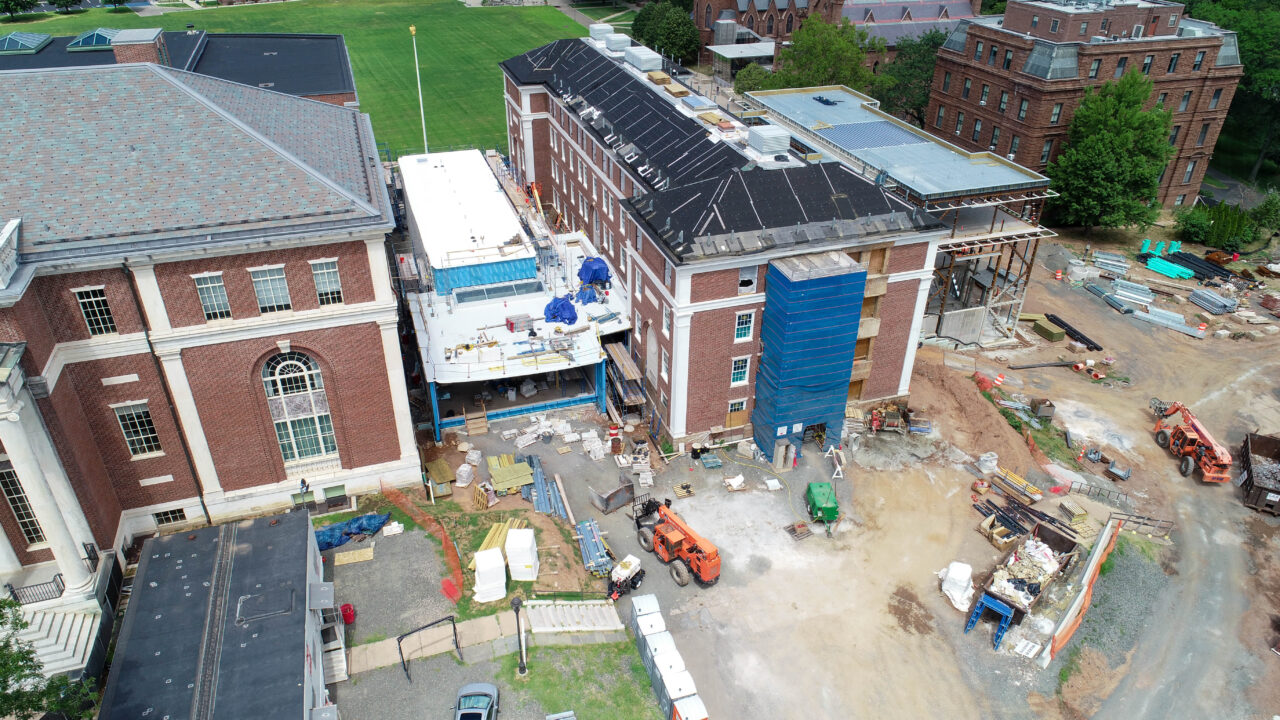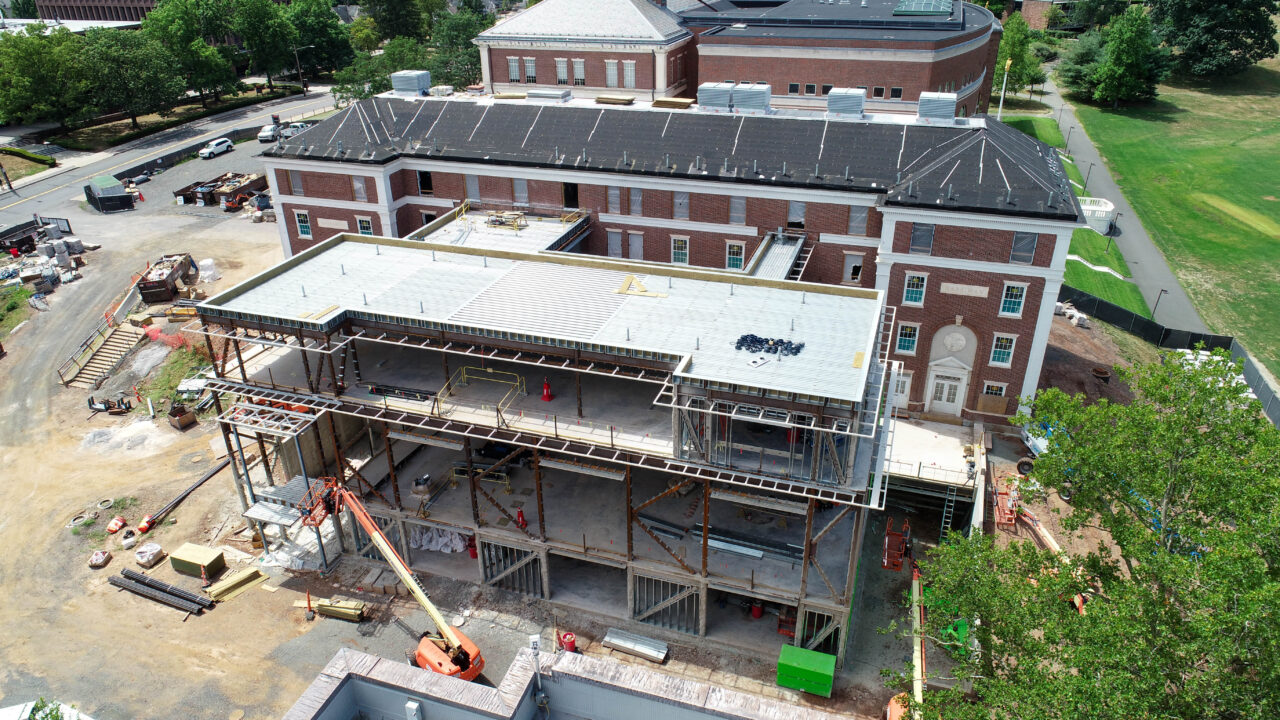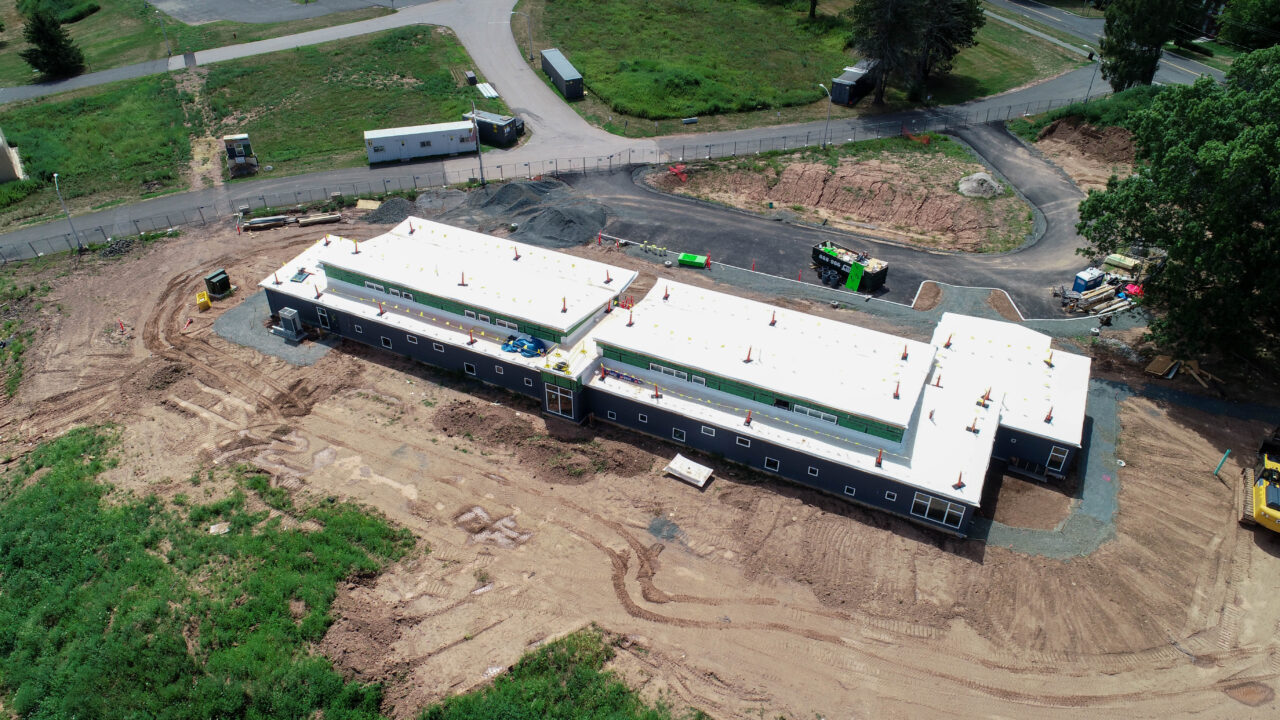University Making Progress on New Construction and Renovations


While students were away for the summer, Wesleyan’s Physical Plant staff were hard at work on new construction and renovations across campus, projects that improve the university’s ability to offer a high-quality education.
“I’m incredibly proud of the team that has accomplished so much on our campus this summer. Their efforts will improve the sustainability of our campus and will benefit many future generations of Wesleyan students, faculty, and staff. I’m grateful to the entire Wesleyan community for their help in prioritizing these critical projects and for the continued flexibility during ongoing construction projects,” said Andy Tanaka ’00, Senior Vice President, Chief Administrative Officer and Treasurer.
All of Wesleyan’s major construction projects – which include the Public Affairs Center, Neighborhood Preschool, and campus-wide steam to hot water conversion – are on time and budget, according to Alan Rubacha, Assistant Vice President for Construction and Infrastructure. “I would say unequivocally that Wesleyan had one of the best summers ever in terms of progress towards our goals of new building construction, campus maintenance and achieving carbon neutrality,” Rubacha said.
In addition, 32 major maintenance projects ranging from the replacement of aging porches and floors in wood frame residences to other repairs in residence halls across campus were completed this summer. Twenty classrooms have also been updated.
“Our facilities must be there to support our academic endeavors. Wesleyan’s Facilities Operations Team works every day to support the university’s curricular and co-curricular priorities. I am grateful to the team that accomplished so much this summer to get the campus in shape for the year ahead,” said Luigi Marcone, Assistant Vice President for Facilities Operations.

New Public Affairs Center and Science Center
The new building projects underway are proceeding according to plan, including the Public Affairs Center (PAC) and new science building.
The PAC project involves a complete remodel of the current building, which was constructed in 1927 as a dormitory. The project also includes demolition of the existing East and West additions, which were added in 1954, and removal of the concrete and brick plaza. As part of the PAC renovation, a new gallery will be built. The gallery, located in between the PAC building and Olin Library, is currently undergoing installation of a limestone exterior surface with stone sourced from Indiana. The project will be completed in Spring 2024.
The PAC construction project alone has been a major job creator and economic driver for the region. There have been about 90,000 work hours on the construction project, Rubacha said. Of those hours, 50 percent of the work has been done by tradespeople from underrepresented communities, and 90 percent of the work has been sourced from local contractors (within a 25-mile radius of Middletown.)
In addition to the ongoing PAC construction project, the university is currently accepting bids for the new science building, Rubacha said. The proposed 190,000 square-foot-facility would be built East of Shanklin and Hall-Atwater Laboratories; nestled between Church Street and Lawn Avenue. Designed by Payette Architects, the state-of-the-art building would replace the 56-year-old Hall-Atwater Laboratory, and include 39 research and support labs, nine teaching labs, 10 classrooms, a vivarium, renovated greenhouse, outdoor spaces, and the Advanced Instrumentation Lab. The new science building is designed to use about a third of the energy per square foot that Hall-Atwater uses today, making this building a critical component of Wesleyan’s energy master plan.
Pending successful bid negotiations, excavation of the site will start later this Fall. Important preparations have already been completed, including relocating water, data, and medium voltage electrical services from the site of the new building.
Hot Water Conversion
In September 2021, President Michael S. Roth ‘78 issued Rubacha and his team a challenge – could they accelerate the conversion from century old steam pipes, an antiquated and non-renewal energy distribution system, to a much more modern and efficient low temperature hot water system? The answer was yes.
Rubacha said they finished both Phases 3 and 4 of the project, putting them well ahead of schedule. This summer the team completed conversions of Olin Library, Clark Hall, and Allbritton Halls and installed over 3,000-ft of underground pipe from the power plant to the base of Foss Hill. The new hot water pipes are cheaper to install than replacing the old steam system, are 30 percent more efficient, and allow easy access to future renewable technologies. “We are absolutely on the path to becoming carbon neutral. This was an important step that could not be missed,” Rubacha said.

New Neighborhood Preschool
The new 7,000-sq.-ft. Neighborhood Preschool, located at Long Lane, will start providing daycare services the first week in October. The new building will consolidate two outdated facilities – one of which will be demolished to make way for the new science building. “The new daycare is an enormously important project for Wesleyan and the wider community. The new facility will deliver high-quality service for the parents of our faculty, staff, and Middletown community,” Rubacha said.
CFA and Butterfields
The piano studio, located on the basement level of Music Studios in the Center for the Arts Complex, has experienced issues with flooding over the years, jeopardizing valuable musical instruments. Over the summer, crews excavated the perimeter of the building and connecting tunnels to remove the failed waterproofing materials from the original construction. The crews then added new water proofing, footing drains, and pump chambers to remove the ground water. Similar work was done at the Butterfield Complex to help prevent flooding.
There has been a touch of upheaval in the physical environment of campus, but with refreshed landscaping in key locations, upgraded parking lots, and improved classrooms, the entire community will benefit.
“When our students come back, they are going to enjoy the campus experience. We will be out of everyone’s way well ahead of Arrival Day, and I think the spaces people use on campus will be better than ever,” Rubacha said.

